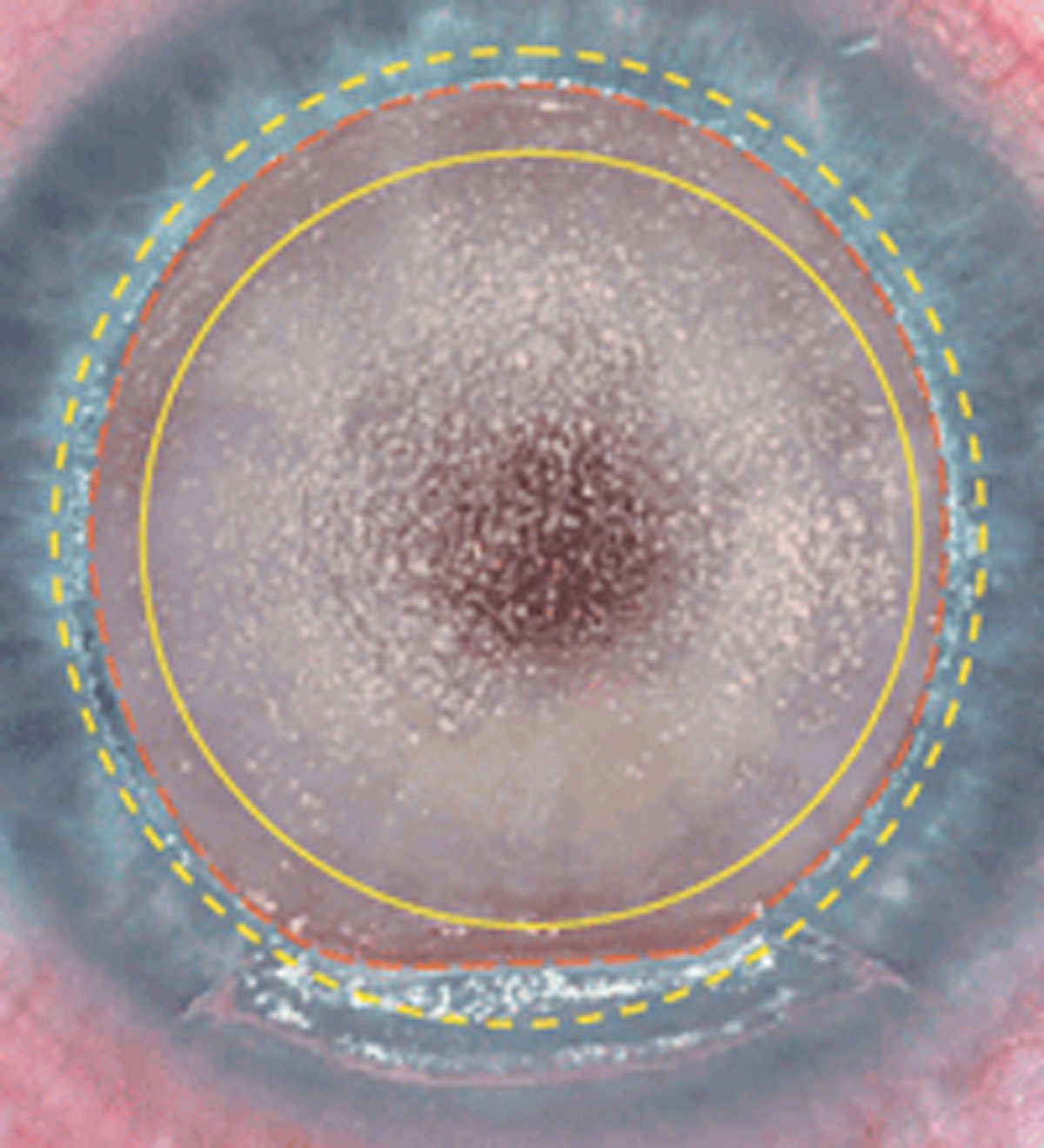 |
| Wavefront-guided LASIK outperformed SMILE in this study. Photo: Martin L. Fox, MD. Click image to enlarge. |
Researchers recently sought to determine whether there is a difference in safety, efficacy and predictability between wavefront-guided LASIK and small-incision lenticule extraction (SMILE) for myopia. They determined that, while both offer significant improvements in corrected distance visual acuity (VA) and excellent predictability in both eyes, wavefront-guided LASIK resulted in faster visual recovery, better low contrast VA and greater gains in uncorrected VA.
The study treated 88 eyes of 44 myopic patients with low levels of astigmatism, with wavefront-guided LASIK in one eye and SMILE in the fellow eye from March 2017 to March 2021. It then assessed 74 eyes of 37 patients who had successful treatments and completed 12 months of follow-up. Post-op evaluation at day one consisted of uncorrected distance VA (UDVA), wavefront aberrometry and a slit lamp examination. On subsequent postoperative visits at one, three, six and 12 months, the researchers performed UDVA, manifest refraction, 5% and 25% low-contrast VA, wavefront aberrometry and slit lamp examination.
The safety profiles of both refractive surgeries were excellent. The researchers noted that the surgeries had excellent UDVA results, though LASIK had a significantly greater proportion of eyes achieving a UDVA ≥20/20 (94% vs. 83%). Still, no patient in the study had a postoperative corrected distance VA of less than 20/20. There was also no difference with mean spherical error and mean spherical equivalent between LASIK and SMILE for the preoperative and all postoperative visits.
The study also found that wavefront-guided LASIK resulted in faster visual recovery compared with SMILE. The researchers believe that this effect was not due to overcorrection or undercorrection, since a higher proportion of LASIK eyes achieved better corrected VA than SMILE eyes. Best-corrected low contrast VA at 5% and 25% was also better in the LASIK group compared with the SMILE group.
One limitation of the study is the difficulty in teasing out bilateral effects from a contralateral eye study design. While it can be used to match treatment arms in relation to monocular visual outcomes, they found that “this study design can make it difficult to interpret phenomena that affect both eyes, such as differences in eye dryness, tear film stability and eye discomfort, and as such, the present study did not investigate this,” according to the team’s paper on the study, published in American Journal of Ophthalmology.
The group believes that future investigations could include comparison of subjective quality of vision between wavefront-guided LASIK and SMILE, evaluation of SMILE procedures that can account for cyclorotation and studies of the biomechanical properties of SMILE eyes.
“Given the pace at which refractive technologies are advancing, having up-to-date clinical trials comparing these technologies can be a daunting task,” they concluded. “Perhaps registry studies will enable keeping abreast of the ever-changing landscape in refractive surgeries.”
Chiang B, Valerio GS, Manche EE. Prospective, randomized, contralateral eye comparison of wavefront-guided laser in situ keratomileusis (WFG-LASIK) and small incision lenticule extraction (SMILE) refractive surgeries. Am J Ophthalmol. November 14, 2021. [Epub ahead of print]. |


